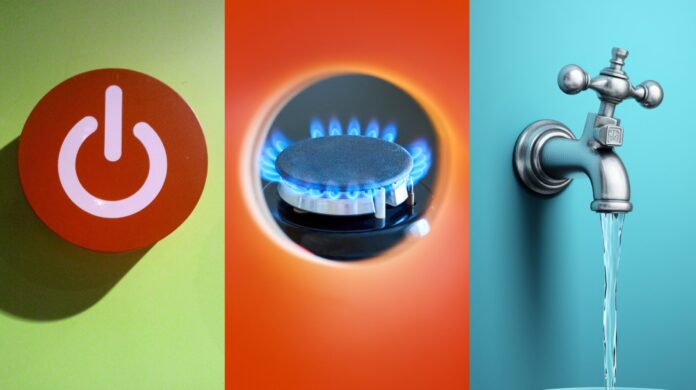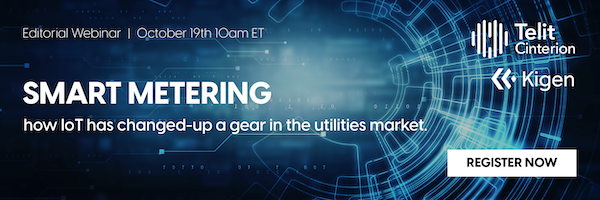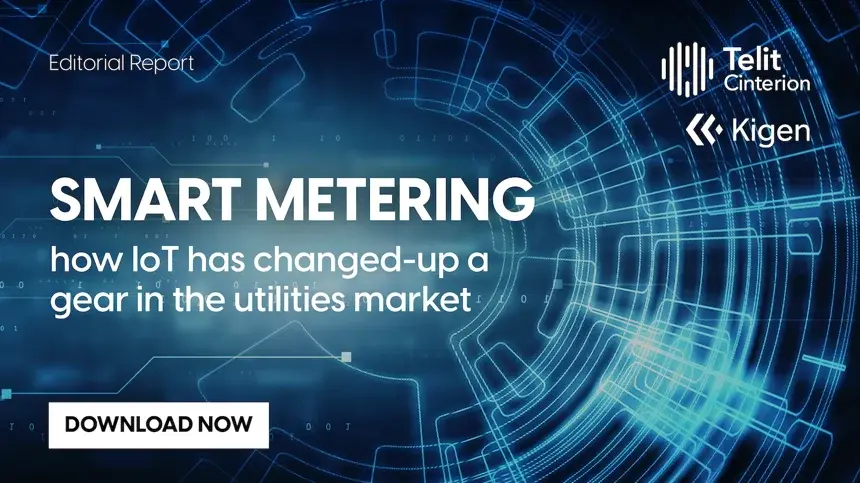Note: this an introduction to and reduction of a forthcoming editorial report on smart meters, covering ‘how IoT has changed up a gear in the utilities market’. The report will be available next month. RCR Wireless will host a webinar on the same subject on October 19, featuring speakers from Telit Cinterion, Kigen, Transforma Insights, and Ubiik. The below article, which will appear in two parts, takes commentary from some of the speakers on the webinar. You can sign-up to the webinar here; there is LOTS to discuss.
The draft version of this article had the working title, ‘why smart meters are so cool’; it was to be followed by a second entry, under the title, ‘why smart meters are so sexy’ (!), and possibly a third, called ‘why smart meters are so gnarly’. The point was to make them sound interesting and important, rather than tired and boring – which is the misperception, perhaps. But, in the process of writing, it was clear they are too interesting and too important to make light of in a throwaway headline. Indeed, they are critical to global sustainability and a model for the rest of the IoT sector. And they deserve more love! Here’s why…
1. Because smart meters are invaluable
If we accept the planet faces an existential energy crisis in terms of how energy is generated and consumed, and we accept the business adage (sales gambit) that you can’t manage what you can’t measure, then smart meters are arguably the single most important technology out there. This is hyperbole, of course; but you get the point. If society is in a race against time to change and manage the energy mix, and save itself from a climate apocalypse, then it needs the tools to mark its progress. The humble smart meter is the tool to save us all – so long as politicians and corporations are ambitious, brave, and correct with the data insights that flow out of it.
But IoT specialist Telit Cinterion puts it better. “Smart meters [enable] a significant shift in our approach to energy management. Their ability to… optimise grid operations and provide actionable insights… represents a prudent investment for utilities and governments. Cost and energy savings… make [them] an attractive proposition for all stakeholders. Their integration within energy infrastructure fosters a symbiotic relationship between environmental sustainability, grid efficiency, and consumer empowerment. [They]… move us closer to a greener and more sustainable future,” comments Neil Bosworth, head of vertical segments and IoT products at Telit Cinterion.
2. Because metering is a mature market
This is not novel tech; utility metering is not like the rest of the IoT market, where complex integration work is required just to drip-feed four/five-figure volume deployments into enterprise venues in agonising slow-motion, often with questionable returns. No, in terms of IoT, smart metering is as old as the hills. Like telematics for fleet tracking, it is a formative constituent of the old machine-to-machine (M2M) market, and an industrial discipline that was supposed to be aped in every vertical in the name of ‘massive IoT’. As it is, it stands alone as the big-daddy application in IoT. SIM specialist Kigen suggests it is the only IoT sector that doesn’t bat its eyes at a million-sized volume contract.
“It is the only type of IoT deployment that can realistically go above the million mark,” says Loic Bonvarlet, senior vice president of product marketing at Kigen. “You don’t see that in any other IoT sectors, right?” Indeed, the trade has been going so long that Europe passed the half-way point for smart electric meters in late 2021, according to analyst firm Berg Insight, which calculated an installed base of 163 million units in 53 percent of customers. The pace is accelerating, too: smart meters accounted for 83 percent of European shipments in 2021. Three quarters (74 percent) of customers in Europe will have a smart meter by 2027; the number is even higher, at 93 percent, in the US.
3. Because metering is a growth market
Of course, the above-quoted stats relate only to electric meters; the gas and water markets are very different – in lots of ways (see below), but most significantly in terms of their rate of penetration. Transforma Insights says smart electric meters account for almost 70 percent of the total metering market, with the rest split roughly evenly between smart gas (15 percent) and smart water (17 percent) units in 2023. It projects the fastest growth will be in water management, with the split in 2028 at 63 percent (electricity), 15 percent (gas), and 22 percent (water). “I do lots of forecasting about the broader IoT market, and metering stands out,” says Matt Arnott at Transforma Insights.
“It has reached real maturity – which you can’t say of much else in IoT. And so the focus has moved from Europe, North America, Japan, and so on, to Africa, Latin America, South Asia – as the big markets for meters.” Which brings new challenges and requires new strategies (see below). But growth is not just about water management in Europe and grid management in Africa, say, but with a more dynamic energy mix, which advances meter services in parallel. Bosworth at Telit Cinterion says: “The rise of prosumers generating electricity via solar panels, wind turbines, and storage systems like EV batteries, necessitates… flexibility [in] the grid. Smart electricity meters [help with this].”
4. Because the market is varied (and adaptable)
Smart meters are flexible. Full stop. Meter makers are smart. But wait; we are falling into a trap. “If you say ‘smart meters’, the assumption is you’re talking about residential deployments of electricity meters,” says Arnott. We are not; we are talking about the whole enchilada: gas, water, even heat metering – in all-different countries, with all-different constraints. Indeed, the market has grown up with wildly varied industrial, regional, and regulatory demands, and responded (quite admirably) with an unholy mess of tech solutions – which have complicated the picture, but made it no less urgent or successful. Arnott hints at the regional and technical mish-mash very well, albeit briefly (given the space, here).
“Gas and water are very different. You don’t want to introduce mains power in those environments, so meters tend to run on batteries. Which means you have different considerations. PLC, say, won’t work at all; full-fat cellular is rare because of its power requirements. NB-IoT and LTE-M – and probably Cat 0 and Cat 1 bis – are big players; perfect for those segments. But gas is a limited market – because it is mostly Europe, North America, parts of Asia. Most of the rest of the world isn’t served by mains gas – so there isn’t this long tail of adoption.” A lot to unpick, and much more to say (in the report), but the gist is clear – and further explains the lack of growth in gas, as quoted above.
(We will return, below, to the tech mix, and how it is defined and determined, and likely to play out.)
5. Because smart meters mean business
We are slipping into a trap, as well, because metering is not just for residential customers. It affords a golden opportunity for enterprises to save on costs and emissions. The industrial sector uses over half (54 percent; more than any other sector) of the world’s total energy, says the US Energy Information Administration; households use about a quarter, says the Organisation for Economic Co-operation and Development (OECD). Major consumers in most markets – “retailers, factories, smelters,” says Arnott – are likely on private tariffs with national utilities, and on the phone to “turn off the fridges” during surge pricing at peak times.
Transforma Insights puts residential (electric smart meter) penetration at 52 percent in 2023 (1.05 billion units), rising to 75 percent in 2028 (1.57 billion), and enterprise penetration at 57 percent (127 million), rising to 80 percent (184 million) – which shows the growth and growth opportunity is mostly with the former. But the enterprise space is hard to perceive; there is a rangier market of mid-sized firms, crossing with residential metering, and an Industry 4.0 movement to install private LTE/5G, which will make metering a focal point of advanced IoT systems. But the real service innovation (see below) will come from private and public organisations, with advanced grid metering to manage energy loads and mixes, and major trends like electrification of the roads, to do the same – in the name of sustainability.
This article is continued here.
For more on smart metering, join the webinar on October 19 with Telit Cinterion, Kigen, Transforma Insights, and Ubiik; sign up here, or by clicking on the image below.



